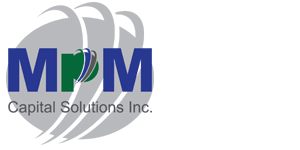The Strengths of Equipment Leasing
July 26, 2013 | By admin |
Many people are hesitant to lease the equipment they need for their business because of a lack of understanding of what leasing is and how it can benefit their business. The reality is that leasing can often be a very good and effective alternative to some of the more commonly used methods of acquiring equipment that businesses need. Many businesses have the understanding that bank loans are the most common and safest way to finance equipment. However, once the perception of leasing changes, many business people are able to understand how it can benefit their business and it becomes their method of choice for acquiring the equipment they need.
Equipment leasing is a good way to get the equipment you need more quickly than other commonly used methods of finance. With leasing, a lessor who owns or controls the equipment transfers possession of the equipment to the lessee for a specific amount of time in exchange for a series of payments for use of the equipment. A loan, on the other hand, is when a lender offers you an amount of funding with the expectation of complete repayment along with interest.
Because we think it is important that you understand the distinctions between leases and loans we think it is important to keep the following in mind when deciding how to finance your businesses equipment needs:
- Immediate access to Equipment. Leases typically require much less paperwork and processing. You will get your hands on the equipment sooner.
- Cash Savings. Instead of paying the entire cost for the equipment, you can make smaller monthly payments for the portion of the equipment’s life cycle that you use.
- Lowered Upfront Costs. Typically, lessors demand simply a small initial investment like the first lease payment. Determined by your firm’s economic health, a security deposit may be required, but it will still be less than the deposit required for a loan.
- 100 percent financing. It is possible to finance 100 percent in the equipment, installation and hang set expense.
- Versatile Lease Payments. Schedule your payments around your own busiest times. Most lessors will work with you and offer monthly, quarterly or periodic payment plans to match your cash and business flow.
- Tax Advantages. Structured correctly, your lease payments can be 100 percent tax deductible. Generally only the interest is tax deductible with a loan.
- Conserved credit lines. Because your leasing, your lines of credit are not impacted; those resources will remain available for operational, short-term loan or additional purposes. Also, the lease obligation does not show up as debt on the balance sheet.
- Equipment Options. At the end of the lease term you don’t have to keep the equipment. You can lease it only for the time you need it, and then you will be able to renew the lease for an additional term, return the equipment, or upgrade the equipment. Additionally, you’ll have the opportunity throughout the lease to upgrade your equipment.
Equipment leasing can offer many advantages over other methods of acquiring equipment. We encourage any business considering obtaining equipment to carefully consider all of its options and make the decision of how to pay for the equipment based on what is best for that specific business. If leasing is the best option for your business, you will be able to see some clear advantages.

Recent Comments